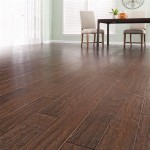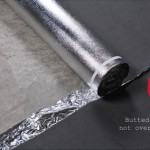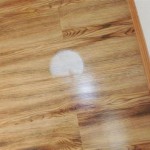How to Lay Laminate Flooring on an Uneven Floor
Laminate flooring offers an attractive and durable flooring solution for many homes. Its affordability and ease of installation make it a popular choice for DIY projects. However, successful laminate flooring installation hinges on a stable and level subfloor. Uneven subfloors present a significant challenge, potentially leading to issues such as squeaking, flexing, and damage to the laminate planks over time. Understanding how to address these imperfections before laying the laminate is crucial for achieving a professional and long-lasting result. This article comprehensively explores the methods and techniques involved in preparing an uneven floor for laminate installation.
The longevity and performance of a laminate floor are directly linked to the condition of the subfloor. Imperfections such as dips, humps, and variations in height can compromise the integrity of the finished floor. When laminate planks are laid upon an uneven surface, the interlocking system can experience undue stress, eventually leading to joint failure and separation. Furthermore, the unsupported areas beneath the planks can cause them to flex excessively, resulting in noisy floors and premature wear. Therefore, addressing unevenness is not simply an aesthetic concern but a necessary step to ensure the structural integrity and lifespan of the laminate flooring.
Identifying and Assessing the Unevenness
The first step in preparing an uneven floor for laminate installation involves a thorough assessment of the subfloor's condition. This process allows for accurate identification of the type and severity of the imperfections present. A range of tools and techniques can be employed to map out the areas requiring attention.
A long, straight edge, typically a 6-foot level or a straight piece of lumber, is an essential tool for detecting high and low spots. By placing the straight edge across the floor in various directions, the presence of gaps or rocking indicates an uneven surface. The magnitude of the gap can be measured using shims or a measuring tape, providing a quantitative assessment of the floor's unevenness.
For larger areas or rooms with significant unevenness, a laser level can provide a more comprehensive assessment. By setting the laser level at a known height and projecting a beam across the floor, variations in elevation become readily apparent. This technique is particularly useful for identifying subtle slopes or gradual undulations in the subfloor.
In addition to visual inspection using straight edges and laser levels, it is also important to physically feel the floor for any inconsistencies. Walking barefoot or in socks across the floor can reveal subtle variations that might be missed during a visual inspection. Note any areas where the floor feels soft, spongy, or noticeably different in height.
Once identified, the extent of the unevenness needs to be documented. Create a sketch of the room and mark the locations of any high spots, low spots, or other imperfections. Note the depth or height of each imperfection, using measurements obtained with shims or a measuring tape. This documentation serves as a roadmap for the subsequent floor preparation steps.
Methods for Leveling an Uneven Subfloor
Several methods can be employed to level an uneven subfloor before installing laminate flooring, each suited to different types and degrees of unevenness. The choice of method depends on factors such as the severity of the imperfections, the type of subfloor (concrete or wood), and the desired level of precision.
For minor imperfections, such as small dips or slight height variations, self-leveling compound can be an effective solution. This cement-based mixture is poured onto the floor and allowed to flow, automatically filling in low spots and creating a smooth, level surface. Self-leveling compound is typically used for concrete subfloors but can also be applied over plywood subfloors after appropriate preparation.
The application process involves mixing the self-leveling compound according to the manufacturer's instructions and pouring it onto the floor. A gauge rake or trowel can be used to spread the compound evenly and ensure it reaches all low spots. Air bubbles should be removed using a spiked roller. The compound will then self-level and harden, creating a smooth surface ready for laminate installation. It's crucial to account for the final thickness of the compound and ensure doorways and transitions are properly accommodated.
For more significant unevenness or larger areas, patching compound or shims may be required. Patching compound is a thicker material that can be used to fill in deeper depressions or level out localized areas. Shims, thin pieces of wood or plastic, can be used to raise specific sections of the subfloor to the desired level. This is often used for wood subfloor.
When using patching compound, it is important to clean the area thoroughly and apply a bonding agent to ensure proper adhesion. The patching compound should be applied in thin layers, allowing each layer to dry completely before applying the next. This prevents cracking and ensures a strong, durable repair.
When using shims, they should be strategically placed beneath the underlayment or directly under the laminate planks, if permissible by the manufacturer. The shims should be secured in place using construction adhesive or screws to prevent them from shifting during installation. Ensure the shims are level and do not create any new high spots or unevenness. It's best practice to strategically place the shims along the joists or at bearing points to prevent flexing.
In extreme cases where the subfloor is severely uneven or damaged, it may be necessary to install a new subfloor. This involves removing the existing subfloor and replacing it with a new layer of plywood or OSB (oriented strand board). This method provides the most reliable solution for creating a level and stable base for the laminate flooring. However, this also significantly increases the scope and cost of the project.
Underlayment Considerations for Uneven Floors
Even after addressing the major unevenness in the subfloor, minor imperfections may still remain. Underlayment plays a crucial role in mitigating these imperfections and providing a smooth, cushioned surface for the laminate flooring. Selecting the appropriate type of underlayment is essential for achieving optimal performance and comfort.
For uneven floors, a thicker underlayment is generally recommended. Thicker underlayments provide greater cushioning and can help to bridge small gaps or imperfections in the subfloor. Underlayments with a higher density also offer better sound insulation and can reduce noise transmission between floors.
Some underlayments are specifically designed for use on uneven floors. These underlayments often incorporate features such as a built-in vapor barrier and a self-leveling layer that helps to distribute weight evenly across the subfloor. These specialized underlayments can provide a significant improvement in the overall performance and longevity of the laminate flooring.
When installing underlayment on an uneven floor, it is important to ensure that it is properly secured. Overlap the edges of the underlayment strips slightly and tape them together using seam tape. This prevents the underlayment from shifting during installation and helps to create a vapor barrier.
In addition to providing cushioning and sound insulation, underlayment also helps to protect the laminate flooring from moisture. It is important to select an underlayment with a built-in vapor barrier, especially when installing laminate flooring over concrete subfloors. This barrier prevents moisture from wicking up from the concrete and damaging the laminate planks.
Furthermore, when choosing underlayment, consider the manufacturer's recommendation for the specific laminate flooring being installed. Some laminate manufacturers have specific requirements for underlayment thickness and density to maintain the warranty. Ignoring these recommendations risks voiding the warranty on the flooring.
Properly preparing an uneven floor for laminate installation requires careful assessment, appropriate leveling techniques, and the selection of a suitable underlayment. By addressing these factors, a professional-looking and long-lasting laminate floor can be achieved, enhancing the beauty and value of the home.

Can We Install Laminate Flooring On An Uneven Floor Singapore

How To Lay Laminate Flooring Over An Uneven Floor Hunker

Common Mistakes When Laying Laminate Flooring Next Day Floors

10 Beginner Mistakes Installing Vinyl Plank Flooring Fixthisbuildthat

How To Lay Laminate Flooring On Uneven Concrete Floor

How To Fix An Uneven Subfloor Diy Home Improvement

How To Install Vinyl Plank Flooring On Uneven Floor

Ask The Builder Blame Installation For Laminate Flooring S Problems

Installing Laminate Floors For Beginners Cabana State Of Mind

3 Options For Uneven Floor Repair Doityourself Com
Related Posts








